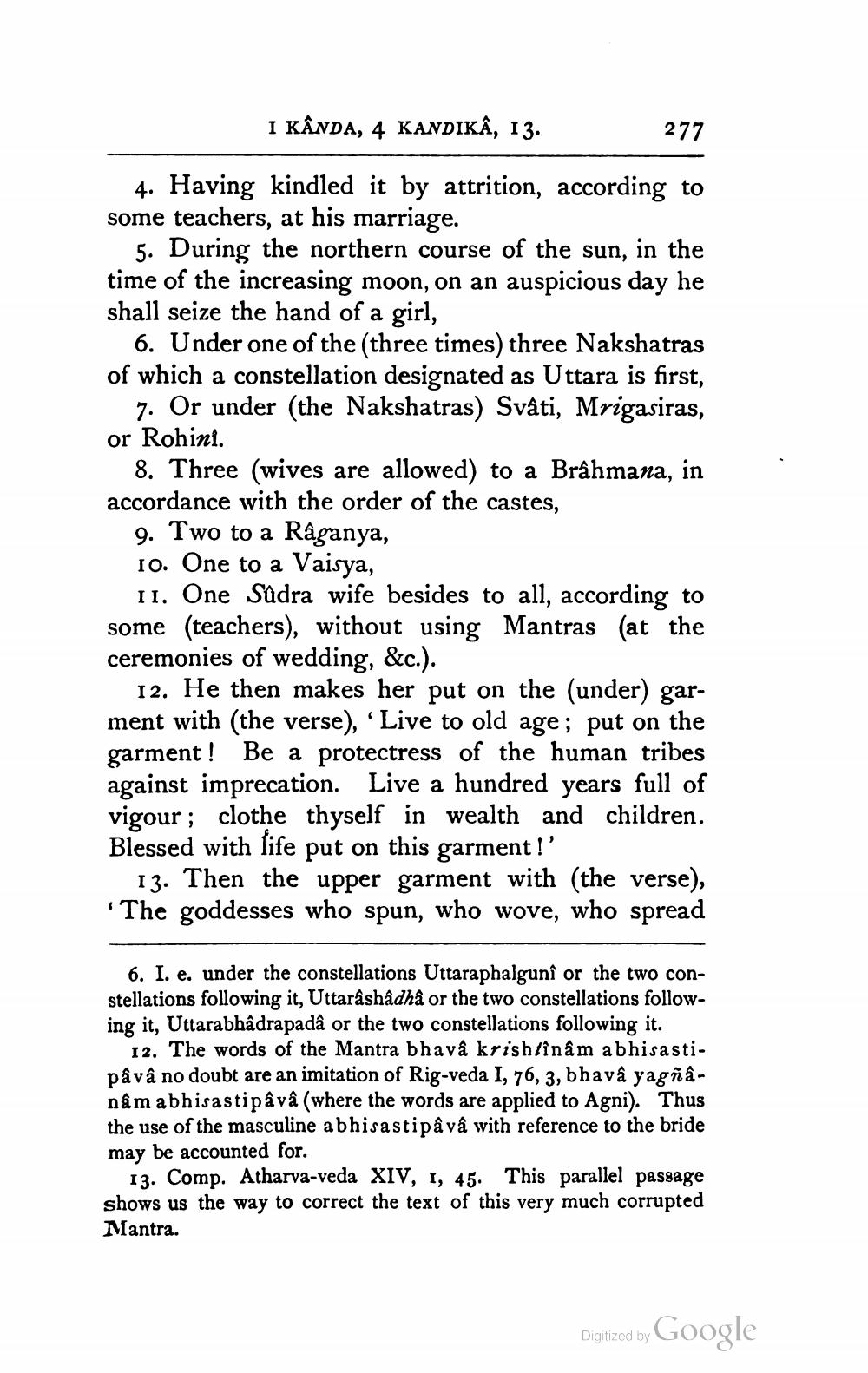________________
I KÂNDA, 4 KANDIKÂ, 13.
277
4. Having kindled it by attrition, according to some teachers, at his marriage.
5. During the northern course of the sun, in the time of the increasing moon, on an auspicious day he shall seize the hand of a girl,
6. Under one of the three times) three Nakshatras of which a constellation designated as Uttara is first,
7. Or under (the Nakshatras) Svâti, Mrigasiras, or Rohini.
8. Three (wives are allowed) to a Brâhmana, in accordance with the order of the castes,
9. Two to a Râganya, 10. One to a Vaisya,
11. One Sudra wife besides to all, according to some (teachers), without using Mantras (at the ceremonies of wedding, &c.).
12. He then makes her put on the (under) garment with (the verse), 'Live to old age; put on the garment! Be a protectress of the human tribes against imprecation. Live a hundred years full of vigour; clothe thyself in wealth and children. Blessed with life put on this garment!'
13. Then the upper garment with (the verse), *The goddesses who spun, who wove, who spread
6. I. e. under the constellations Uttaraphalgunî or the two constellations following it, Uttarâshâdhå or the two constellations following it, Uttarabhadrapadâ or the two constellations following it.
12. The words of the Mantra bhava krish/inâm abhisastipâvâ no doubt are an imitation of Rig-veda I, 76, 3, bhava yagñanâm abhisastipâvâ (where the words are applied to Agni). Thus the use of the masculine abhisastipâvâ with reference to the bride may be accounted for.
13. Comp. Atharva-veda XIV, 1, 45. This parallel passage shows us the way to correct the text of this very much corrupted Mantra.
Digitized by Google




